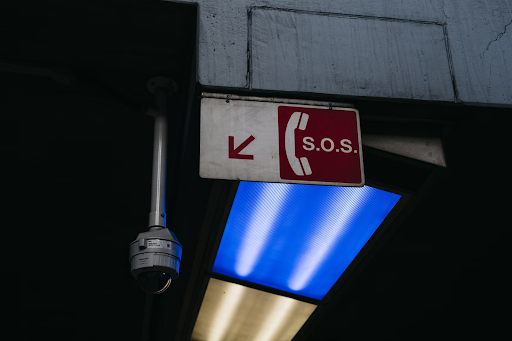Do you know the meaning of SOS? This guide will give you all of the knowledge you need on the acronym SOS as well as how it is used!
-
Kevin
-
 February 4, 2022
February 4, 2022
-
 Common Questions
Common Questions
 February 4, 2022
February 4, 2022
 Common Questions
Common Questions
Do you know the meaning of SOS? This guide will give you all of the knowledge you need on the acronym SOS as well as how it is used!
According to Boat Safe, SOS is a maritime term that is used as a distress signal. Dictionary states that this code is used by ships in distress as a call for helpand is known as the International Morse Code distress signal
SOS can also be used in a more general way as a noun or a verb to refer to any call for help. But do you know what SOS really stands for? Read on to find out!

While people often think that SOS stands for “save our ship,” the term does not actually stand for anything. It is simply an easy-to-recognize set of signals in Morse code both to type and to receive. The Morse code radiotelegraphic signal for SOS is · · · – – – · · · (three dots, three dashes, and another three dots).
SOS is used in the maritime language and can also be used as a slang term to ask for help in everyday life. Many slang terms come from military or maritime speak.
The SOS call was preceded by another telegraph signal called CQD. While many believe that CQD stands for “come quick, danger,” it actually comes from the term for a general call on a British landline known as a CQ. Therefore, a CQD was a general call followed by a D for distress.
In 1906 at the Berlin Radiotelegraphic Conference 1906, the first International Radiotelegraph Convention, CQD was retired. SOS was adopted after its creation in the German government. This term was not easily misinterpreted and could be sent together as a string of beeps and dots. While CQD was used for many more years after SOS was ratified in 1908, there are many cases in which both were used by Marconi operators.
The second Radio Officer on the SS Carpathia, Harold Bride, stated that the Titanic first used CQD as a distress call. Captain Smith ordered first radio officer Jack Phillips to call for help, and he used CQD six times. Later, they began using SOS.
SOS was used for the first time in America in August 1909 on the SS Arapahoe by T. D. Haubner. The ship lost a screw in the “Graveyard of the Atlantic,” Diamond Shoals, and sent this message to Hatteras while off the North Carolina (NC) coast. Later, this ship received its own SOS call from the SS Iroquois. The United States officially adopted SOS in 1912.
SOS isn’t exclusively reserved for maritime use. It can have a variety of other uses as a slang term in everyday life. Many people use SOS as a call for help. Take a look at the below examples of SOS used in daily life:
The babysitter called for an SOS from the moms. The care of children under two was not her specialty, and she needed more help than she thought. The mothers came back home to find all of the children crying and realized that six children were too many for one teenager.
SOS! I need to get back to England, but I lost my passport in Austria. How am I going to get home? I can’t contact the consulate, and no plane or train will let me on without my ID.
SOS — I accidentally sent out the unfinished newsletter. How do I get it back from everyone’s inbox? My boss is going to kill me…
Aside from being an international distress signal, SOS has a few other potential meanings. Take a look at these abbreviations from The Free Dictionary!
SOS is a morse code signal for distress in the International Code of Signals from the Marconi Company and international regulations. It signals to the recipient that the sender needs immediate help. The individual letters in the signal SOS are easy to send and understand. SOS is also used as slang for help in non-maritime settings.